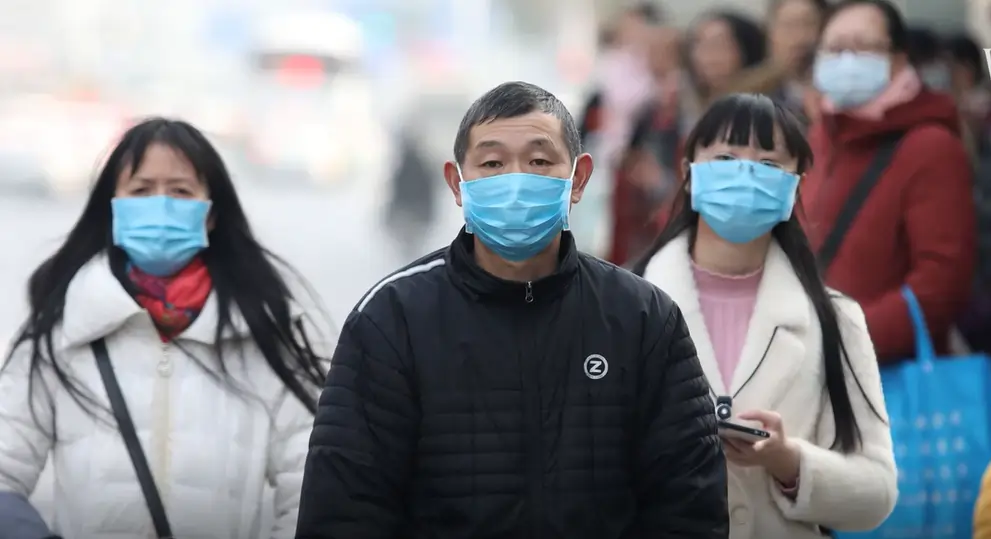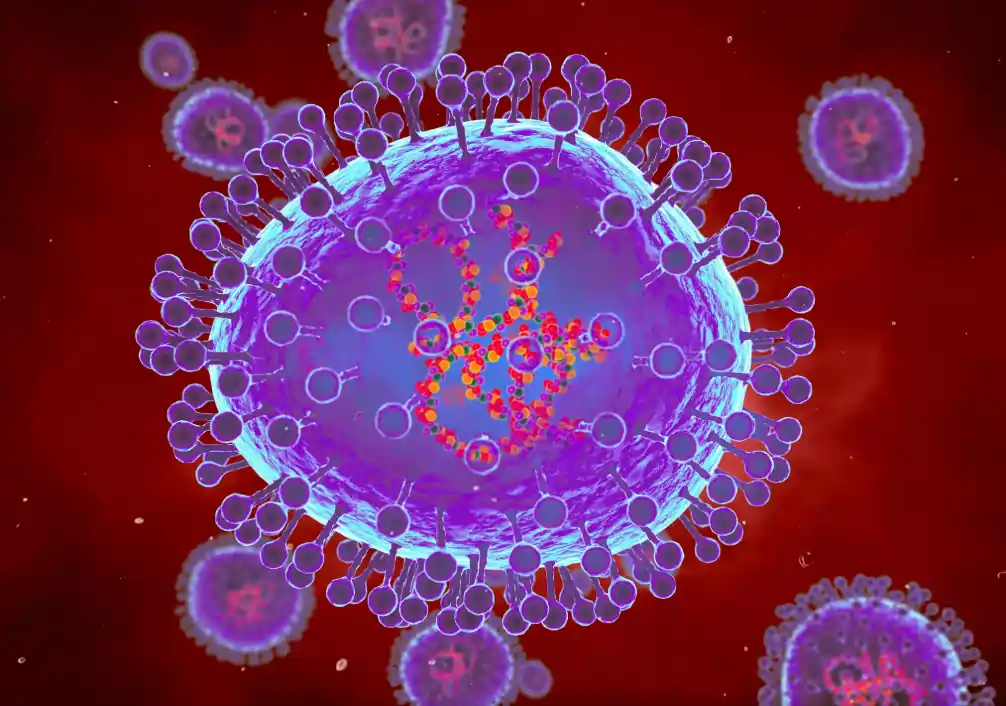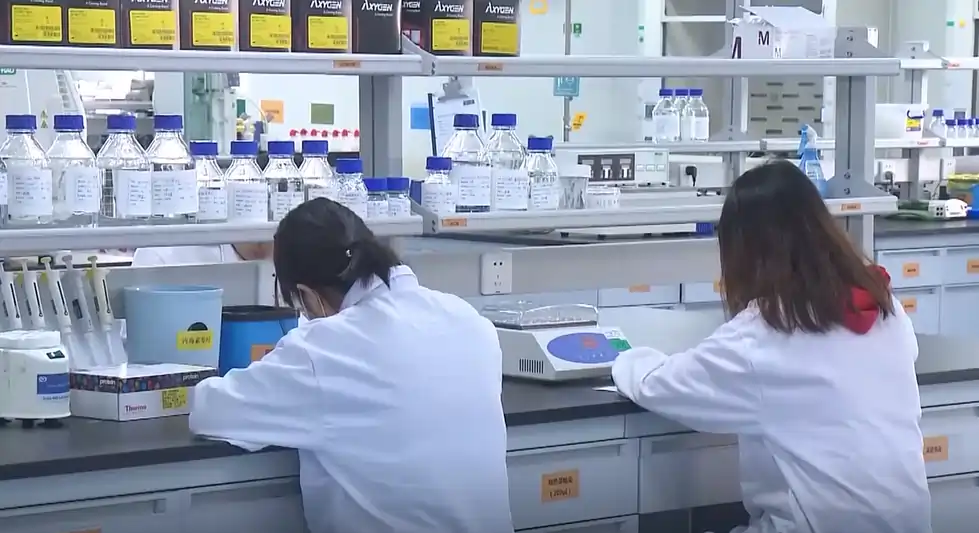
Table of Contents
The China new virus outbreak, identified as human metapneumovirus (hMPV), has set off alarms worldwide as health authorities confirm over 300 cases in China alone. This pneumonia-like illness has rapidly crossed borders, with cases reported in South Korea, Japan, and Thailand. While distinct from the deadly SARS virus, hMPV has drawn comparisons due to its swift transmission and significant global implications.

What Is hMPV?
Human metapneumovirus (hMPV) is a respiratory virus first discovered in 2001. It primarily affects vulnerable groups such as young children, the elderly, and individuals with weakened immune systems. While many cases present mild cold-like symptoms, the virus can escalate to severe respiratory issues like bronchitis or pneumonia, potentially overwhelming healthcare systems during seasonal peaks.
Symptoms of hMPV
- Fever
- Persistent cough
- Shortness of breath
- Fatigue and weakness
- Severe cases: wheezing, chest tightness, and difficulty breathing
The emergence of this China new virus has intensified concerns, particularly given its capacity to spread rapidly and affect already strained healthcare systems.
The Current Outbreak: What We Know
Rapid Spread Across Borders
The outbreak, which began in late 2024 in China’s bustling urban centers, has quickly expanded. Neighboring countries such as South Korea, Japan, and Thailand have reported cases, underscoring the virus’s high transmissibility and raising concerns about broader regional outbreaks.
Comparison to SARS
Though hMPV differs genetically and clinically from SARS, the rapid escalation has sparked memories of the 2002 SARS epidemic. That outbreak, which resulted in over 700 deaths worldwide, serves as a stark reminder of the potential for respiratory viruses to disrupt global health systems.
Ongoing Research
Health experts are racing to understand the virus’s origin, mutation patterns, and modes of transmission. Preliminary findings suggest that close contact and respiratory droplets are the primary means of spread, highlighting the importance of preventive measures such as mask-wearing and hand hygiene.

Global Response to the Outbreak
China’s Measures
The Chinese government has implemented stringent measures to curtail the virus’s spread, including:
- Travel Restrictions: Movement in and out of affected regions has been tightly controlled.
- Healthcare Mobilization: Additional medical personnel have been deployed to outbreak hotspots.
- Public Awareness Campaigns: Efforts to educate citizens about hygiene practices are in full swing.
International Collaboration
The World Health Organization (WHO) has issued advisories, urging countries to increase surveillance, share data, and prepare healthcare systems. Neighboring nations have intensified airport screenings and issued health alerts to travelers, aiming to contain the virus’s spread.
Vaccine and Treatment Development
At present, no specific vaccine for hMPV exists. However, researchers are exploring antiviral treatments and fast-tracking vaccine development. In the meantime, supportive care, including hydration and respiratory support, remains the cornerstone of treatment.
Economic and Social Impacts
The hMPV outbreak is not merely a health crisis but a challenge with far-reaching economic and social repercussions.
1. Impact on Travel and Tourism
Travel restrictions and heightened fear of infection have led to a sharp decline in international travel. Airlines, hotels, and tourism-dependent businesses in affected regions are grappling with significant financial losses.
2. Strain on Healthcare Systems
Hospitals in outbreak zones are under immense pressure as they contend with an influx of patients requiring specialized respiratory care. This strain threatens to divert resources from other critical healthcare services.
3. Public Anxiety and Behavioral Changes
The uncertainty surrounding the China new virus has created widespread anxiety. Panic buying has led to shortages of essential items such as masks, hand sanitizers, and even over-the-counter medications in some areas.
Parallels to Past Epidemics
The hMPV outbreak evokes memories of past health crises such as SARS and COVID-19. These events have underscored the importance of rapid response, transparency, and international cooperation in managing infectious diseases.
Key Lessons from Previous Outbreaks
- Early Detection is Crucial: Identifying outbreaks early can significantly reduce their spread.
- Clear Communication is Essential: Governments must provide accurate, timely updates to prevent misinformation.
- Collaboration Matters: Global solidarity and resource-sharing are vital in combating pandemics.

How to Protect Yourself
Health experts stress the importance of individual precautions to minimize the risk of infection. Recommended measures include:
- Practice Good Hygiene:
Wash hands frequently with soap and water for at least 20 seconds. - Wear Masks in Crowded Areas:
Particularly in regions with reported cases, masks can reduce exposure to respiratory droplets. - Avoid Close Contact:
Maintain distance from individuals showing symptoms of respiratory illness. - Boost Immunity:
A balanced diet, regular exercise, and sufficient sleep can help strengthen the immune system. - Stay Informed:
Follow updates from reliable sources such as the WHO and local health authorities.
Global Implications and Moving Forward
The hMPV outbreak underscores the interconnectedness of today’s world and the vulnerabilities that come with it. As global health authorities collaborate to contain the virus, the situation remains fluid, with new information emerging daily.
Conclusion
The China new virus, hMPV, has brought to light the challenges of managing emerging infectious diseases in a globally connected world. Its rapid spread and the resulting public health response demonstrate the need for vigilance, preparation, and collaboration.
As research progresses and containment measures take effect, there is hope for mitigating the virus’s impact. The lessons learned from past outbreaks, combined with modern medical advancements, offer a roadmap for addressing this crisis and future challenges.
FAQs
1. What is the China new virus (hMPV)?
Human metapneumovirus (hMPV) is a respiratory virus causing mild to severe respiratory illnesses, primarily affecting vulnerable populations.
2. How does hMPV spread?
hMPV spreads through respiratory droplets and close contact with infected individuals.
3. Is there a vaccine for hMPV?
Currently, there is no specific vaccine for hMPV. Research is ongoing to develop effective treatments and preventive measures.
Disclaimer
This article is based on publicly available information and statements from health organizations. As the situation evolves, readers are encouraged to follow updates from trusted sources such as the WHO and local health authorities.
TechWirings neither supports nor endorses the views or actions represented in this content.










